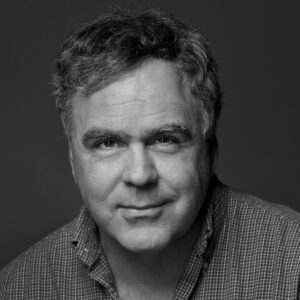
In This School District’s ‘Test Kitchen,’ Teens Go Beyond the Classroom to Build Drones, Research Cancer & Try Out Careers
At Kansas’s Blue Valley CAPS, high-schoolers spend 3 hours a day dipping their toes in adult professions — real life, but with ‘bubble wrap,’ one says
By Greg Toppo | July 5, 2023Overland Park, Kansas
Across America most mornings, it’s a safe bet that the typical high school student is sitting in a classroom, listening to a teacher talk.
But on a recent Tuesday, Cara Mitchell was on her feet, running a class herself. Actually, she was managing a project, taking a small group of classmates through the paces of making a 3-D printed desk name plate.
Not exactly a glamorous assignment, she’ll admit. But the key was to give students practice with digital tools they’ll need to build much larger projects down the line, including an airplane-like drone that takes off and lands vertically.
A senior studying aerospace engineering at the Blue Valley Center for Advanced Professional Studies, Mitchell attends the half-day high school program while also taking classes at her neighborhood high school. BV CAPS, or CAPS for short, offers a different kind of experience from what she and her classmates typically get by integrating real-world projects, internships and mentorships. That gives them a head start in high-demand careers in this prosperous suburb of Kansas City.
In the process, CAPS is overturning conventional wisdom about secondary education. It offers high school juniors and seniors a guided, hands-on, practical experience in six strands of work, including not just aerospace engineering but healthcare, food science and education. All of this while offering them a kind of freedom and agency most have never felt in school.

“You get to do something that you’re passionate about,” said Mitchell, who plans to study aviation and minor in business. “It’s like stepping into the real world, but you kind of have bubble wrap there in case.”
An idea spreading worldwide
CAPS occupies what looks less like a high school and more like a modern, open-concept office building, complete with a soaring, three-story atrium. The office-building feel and design are intentional, said CAPS Director Corey Mohn: “The idea was that it should not feel like school.”
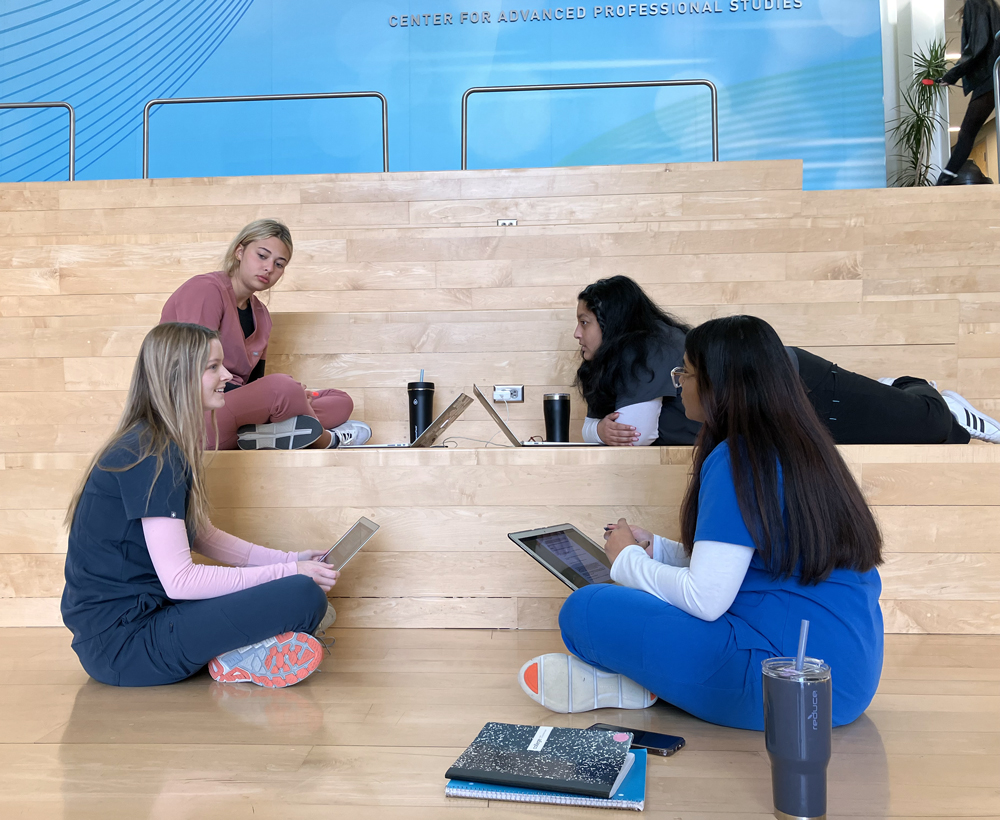
Jennifer Bauer, the center’s business development specialist, calls it “the test kitchen of the district,” where new ideas often emerge because teachers and students are largely free from limits of the district’s comprehensive high schools.
The food-focused strand, for instance, is not a traditional culinary class or even a trendy food-truck incubator, as you might find in a typical career-technical program. Called Future of Food, it exists because regional industry partners were searching for more qualified candidates for jobs in product development and production.
The course challenges students to develop new, sustainable food products with guidance from industry pros who expound on the challenges of developing a scoop tortilla chip or how to evenly coat a mass-produced ice cream bar with nuts.
This spring, CAPS serves about 1,400 students who spend about three hours here each morning or afternoon.
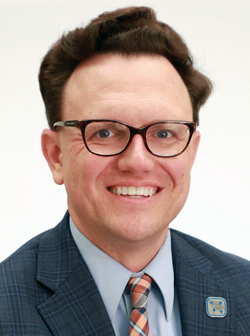
In Overland Park, where it originated, operating funds come mostly from taxpayers. But since CAPS is technically not a school — actually, the district treats the entire enterprise as a class — it can accept corporate donations through its own foundation.
It’s also different in that it’s not a private, industry-owned enterprise, or even a charter school cut loose from its district. Its roots lie in the Blue Valley School District itself, which since 2015 has offered the model to other districts. The CAPS model has since spread to nearly 300 schools in 23 states, as well as Canada, Kuwait and India. While a few private schools have adopted it as well, more than 90% of schools in the network are public.
Chad Ralston, the local CAPS director — if it were a school, he’d be its principal — said the student body is more academically, economically and racially diverse than you’d expect.
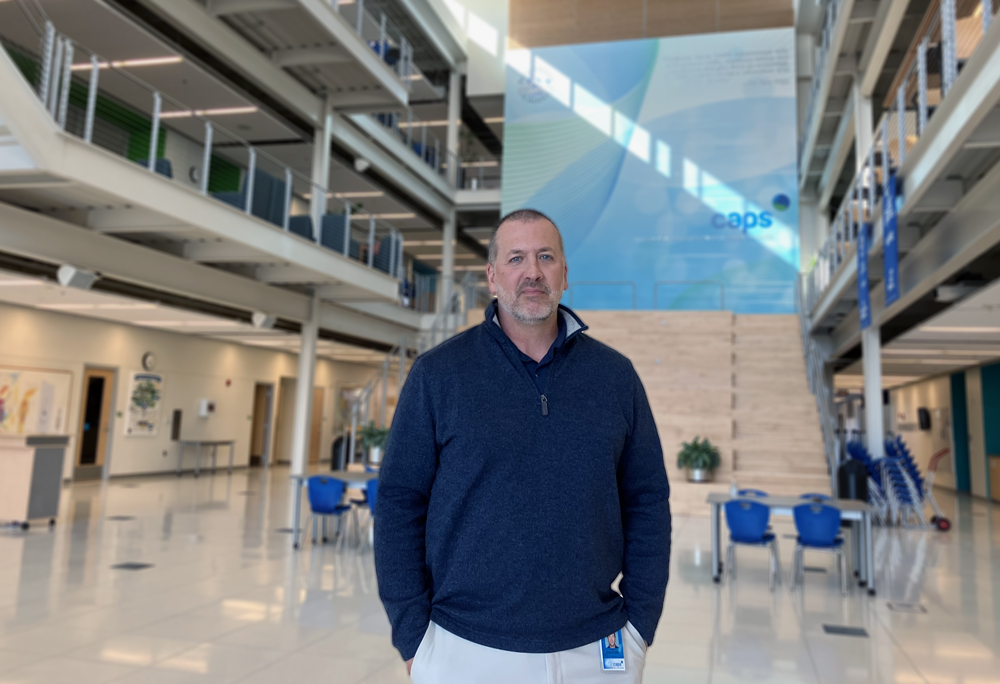
“Even though, on the whole, we can be seen as privileged, we certainly have every walk of life in our schools,” he said, from college-bound students with 4.0 GPAs to kids who aren’t quite sure what’s next. “People feel that this is accessible to them, no matter what.”
In a biology lab one floor up from Mitchell’s aerospace class, Nithya Mamalayan worked through a reading on her laptop as one of the class pets, a slender, multi-colored milk snake named Boot, muscled its way through her outstretched fingers.
The program, Mamalayan said, is “very specialized,” in that students have three hours each day to pursue one thing that interests them. “So you can go a lot deeper.”

When she’s not here or at her neighborhood high school, Mamalayan works in a University of Kansas research lab studying how the buildup of certain proteins predicts ailments like Alzheimer’s disease.
A few seats down, classmate Alyssa Haynes said she’s also working with a KU researcher — on an anti-cancer drug. She said most of what students do in traditional high schools is “kind of just like kind of going through the motions” of education. When you come here, “you actually get to do things that you’re interested in.”
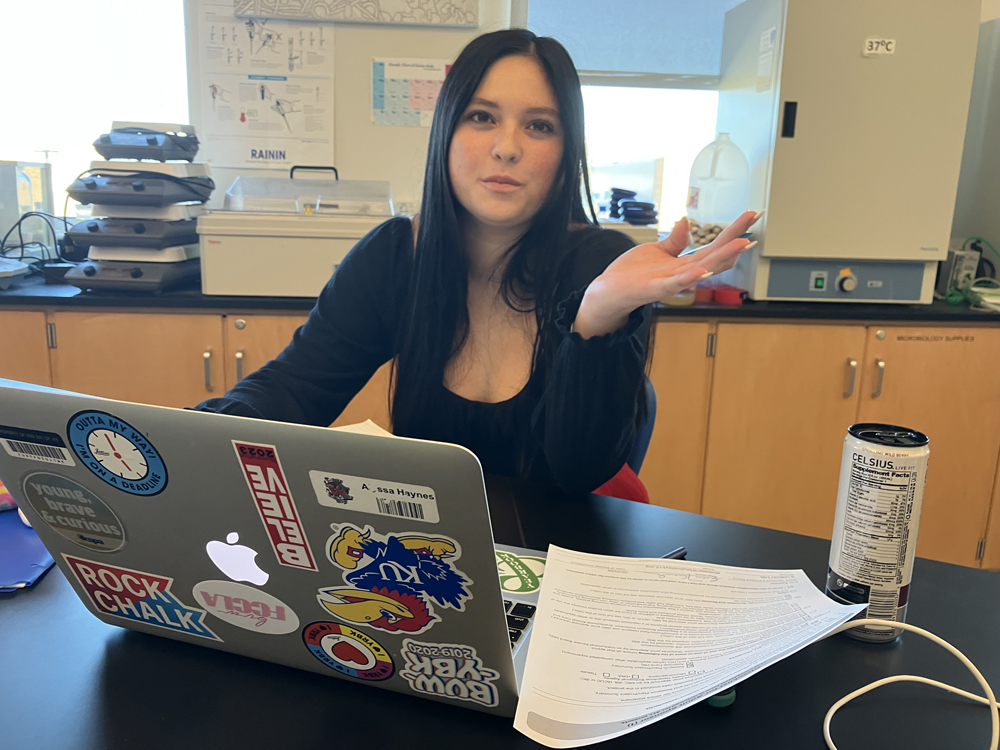
Like most CAPS students, Haynes treasures both the agency and the mobility the program offers. “They don’t baby us as much, so we have a lot more freedom to kind of just move within the hallways and do individual work,” she said.
Along with that sense of freedom, she also has a realistic view of life in a research lab — especially the work she’s allowed to do at 18: “There’s a lot of pipetting,” she said with a laugh, pointing to a nearby tray of glass laboratory vials she routinely fills with medicine. “It’s a real lab workroom. Yes, I’m doing the intern kind of work, but everyone has to start somewhere.”
Experiences like these are valuable, Mohn said, but often for the opposite reason: They show students what they don’t want to do with their lives. He recalled another student engaged in cancer research who soon realized that she’d be working for 30 years before she made any breakthroughs. She wanted to see success sooner, so she went to pharmacy school instead.
‘It’s going on her LinkedIn’
That CAPS even exists is testament to a kind of big thinking that, oddly, grew out of the No Child Left Behind era of the early 2000s, when two trends converged: Basic skills ruled and educators mostly focused on the key outcomes of K-8 education, less on high school.
Blue Valley schools had little trouble with the federal law’s reading-and-math-skills goals, easily meeting annual progress markers.
But students were often having trouble persisting through college. Even high-performing students, Mohn said, struggled with ambiguity. If they couldn’t complete an assignment in a day or two, they were lost. So the district began asking employers what Blue Valley graduates needed.
Much like the difficulties students showed with longer assignments in school, he said, employers saw that graduates, given an ambiguous assignment or troubleshooting task without a clear answer, looked like “deer in the headlights.”
The school board concluded that waiting to impart career skills until they’re in their first jobs was too late. Why not let them have those experiences now, in high school?
Fifteen years later, assignments at CAPS typically take several weeks, with as many as three projects overlapping. “Now suddenly you’re in the world of having to figure out how to manage your time,” Mohn said.
And where in traditional high schools most assignments are forgotten once the test paper is graded and in the trash, at CAPS, Mohn said, the result is typically an end product that a student can point to with pride, as with Haynes’ work in the cancer lab.
“It’s going on her resume. It’s going on her LinkedIn,” he said. “She’s actually going to that university. She’s going to try and get a job doing the same thing.”
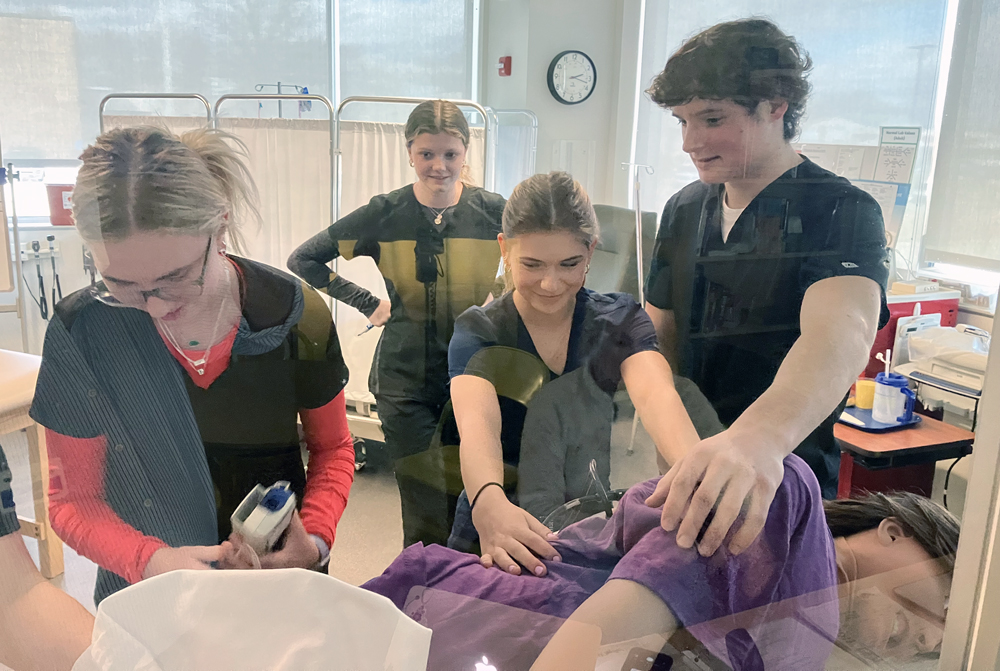
The results so far are encouraging: Between 2013 and 2017, the program raised the percentage of students who, two years after graduating, attended college or held a credential, certificate or diploma: from 83.2% to 89%. During that time, the rate for non-CAPS graduates in the district went essentially unchanged.
Clinton Robinson, an associate vice president at Black & Veatch Corp., an engineering and construction firm founded here in 1915, has worked with CAPS from the beginning. The firm now partners nationwide with CAPS students, including about 50 locally who show up at its Kansas City, KS, offices twice a week to work on “the 10th thing on our to-do list” — a job that needs doing but isn’t getting done. Students have designed houses and consulted on apps, he said They’ve also helped planners rethink what services the region’s new airport needs.
While most of the jobs are low-stakes, in a few instances the firm has had to execute non-disclosure agreements with students on sensitive work “we don’t want the market to know about,” Robinson said. He recalled showing up at a career fair and asking one CAPS student about his work. “He said, ‘I’m sorry, Mr. Robinson. I can’t. I’m under an an NDA.’”
Going ‘toe-to-toe with our CEO’
The program’s effect on graduates is tangible, said Sophia Porter, a recent Johns Hopkins University graduate who serves as a project manager and test operator for BE-4 engines at the Texas aerospace company Blue Origin.
“Blue Valley CAPS treated me like a working adult,” said Porter, who holds dual degrees in physics and applied mathematics and statistics.
At CAPS, she led a team of seven students that developed a mobile app for Children’s Mercy Hospital and interned with an astrophotographer, among others. Once at Hopkins, she took on internships at NASA, the Space Telescope Science Institute, SpaceX and Blue Origin, where she has worked for four years.
Aside from accommodating and encouraging the kind of driven, overachieving student represented by graduates like Porter, perhaps one of the most valuable aspects of CAPS is that it offers its teenaged students that most valuable of assets: permission to ask tough questions.
Robinson, the engineering official said that since CAPS students typically come to the program uncommitted to working at a given firm, they’re not afraid to take risks when they meet adults in industries that interest them.
“They go toe-to-toe with our CEO and our other executives,” Robinson said, and offer “very honest feedback” about what goes on there. They’re polite, he said, but direct: “There is no ‘the king has no clothes’ conversation: ‘You look good today, Mr. CEO.’ It’s ‘Why do you guys still build coal fired power plants?’”
Get stories like these delivered straight to your inbox. Sign up for The 74 Newsletter

